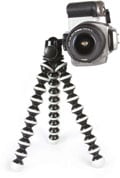Olympus ‘PEN’ E-P2
-
-
Written by Gordon Laing
Olympus M.Zuiko Digital 17mm f2.8 pancake lens: corner and centre sharpness
Olympus E-P2 results : Real-life resolution / High ISO JPEG Noise / High ISO RAW Noise / M.Zuiko Digital 17mm lens sharpness
Olympus M.Zuiko Digital 17mm f2.8 corner crop with Olympus E-P2 |
Olympus M.Zuiko Digital 17mm f2.8 centre crop with Olympus E-P2 | |
 |  | |
f2.8, 100 ISO |
f2.8, 100 ISO | |
 |  | |
f4, 100 ISO |
f4, 100 ISO | |
 |  | |
f5.6, 100 ISO |
f5.6, 100 ISO | |
 |  | |
f8, 100 ISO |
f8, 100 ISO |
Olympus E-P2 results : Real-life resolution / High ISO JPEG Noise / High ISO RAW Noise / M.Zuiko Digital 17mm lens sharpness
|
 | To compare real-life sharpness of the M.Zuiko Digital 17mm f2.8 pancake lens, we shot our standard test scene with it mounted on the Olympus E-P2 at apertures between f2.8 and f8. The images below were processed from RAW files using Olympus Master 2.3 with its default settings, apart from distortion correction which was disabled to see what the lens was capable of. The corner and centre crops are taken from the ares marked with the red rectangles and presented below at 100%. |
To compare real-life sharpness of the M.Zuiko Digital 17mm f2.8 pancake lens, we photographed our standard test scene with it mounted on the Olympus E-P2 at apertures between f2.8 and f8. The images below were processed from RAW files using Olympus Master 2.3 with its default settings, but with distortion correction disabled to see what the lens was capable of. That said we’re unsure how many other automatic corrections can be avoided, as there’s certainly minimal fringing and vignetting evident in the images below. The corner and centre crops are taken from the areas marked with the red rectangles and presented below at 100%.
With the aperture wide-open at f2.8, the M.Zuiko Digital 17mm f2.8 is a little soft in the corners, but it’s not a bad result compared to many lenses, and the crop from the centre is sharp and detailed.
Closing the aperture one stop to f4 delivers what we believe to be the sweetspot for this lens when mounted on a 12 Megapixel body like the E-P1, E-P2 or EPL-1. The corner sharpness is much improved and indeed doesn’t get any better as you close the aperture further. The overall image is also slightly more contrasty than at f2.8, with details in the middle becoming very crisp.
While performance at f4 is very good, it’s virtually no different at f5.6. Technically a minor difference in file size indicates potentially more detail recorded at f4, but we’d be equally happy shooting anywhere in the f4-5.6 range with this lens.
At f8, there’s a very minor softening to the image and reduction in contrast due to diffraction, but at this point it’s only just beginning to kick-in and sufficiently subtle to not be a big issue. So while the f4-5.6 range is preferred for the ultimate crispness, you shouldn’t worry too much about closing down to f8 if you need a larger depth-of-field. While this marks the end of this test, images we took at apertures smaller than f8 began to suffer from a gradually greater impact of diffraction and should ideally be avoided, unless again you really need the larger depth-of-field they deliver.
Once again even when shooting RAW we can’t be sure how many digital corrections are taking place behind the scenes with these images, but the important point is corner sharpness remains respectable throughout the aperture range. This is something which can’t be corrected, so it’s important to have good optical performance.
Look out for a similar report with the Panasonic G VARIO 20mm f1.7 pancake lens coming soon! Now let’s see more sample images taken with the M.Zuiko Digital 20mm f2.8 lens in our Olympus E-P2 Gallery.





